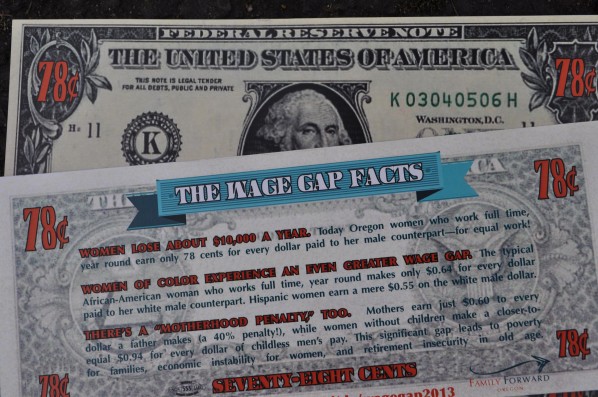 As Equal Pay Day approaches (the day this year when women have finally earned what their male counterpart earned last year), the Oregon Bureau of Labor and Industries (BOLI) put together this great top-10 list of facts to know about equal pay in Oregon:
As Equal Pay Day approaches (the day this year when women have finally earned what their male counterpart earned last year), the Oregon Bureau of Labor and Industries (BOLI) put together this great top-10 list of facts to know about equal pay in Oregon:
10 | Oregon enacted our state’s Equal Pay Act in 1955, eight years before the federal Equal Pay Act.
9 | Women in Oregon still earn only about 79 cents to every dollar that men earn, according to the American Association of University Women. Women of color earn even less: Latina women earn 59 cents on the dollar compared to their white male counterparts.
8 | More than 60-percent of minimum wage workers in Oregon are women, according to a recent report from the Oregon Council on Civil Rights.
7 | An estimated 33 percent of single working mothers in Oregon live below the poverty line.
6 | Mothers experience an even wider gap than women without children, earning only 60 cents on the dollar to their male counterparts.
5 | Oregon’s workforce is changing – with women serving as the breadwinners or co-breadwinners in nearly two-thirds of families across the state.
4 | Expensive and inadequate child care and the difficulty of caring for sick family members represent significant workplace barriers for women and working families.
3 | Attracting more women and people of color to STEM fields (Science, Technology, Engineering and Mathematics) and investing in career training can help more Oregonians find well-paying, family wage careers.
2 | According to the Shriver Report, America can add nearly a half a trillion dollars to our economy by ending the wage gap. That boost to consumer purchasing power will benefit families, communities, and our economy as a whole.
1 | Oregon does not have to accept economic insecurity and wage inequality. With focused attention and ongoing commitment, our state can build a stronger, more equitable economy for everyone.
The pay gap doesn’t just women and people of color, it hurts everyone. While it’s true that there’s no single overarching driver of the pay gap, Oregon doesn’t have to accept this disparity. We can end the pay gap and strengthen the buying power of millions of Oregonians by making this a sustained priority.
— Labor Commissioner Brad Avakian


